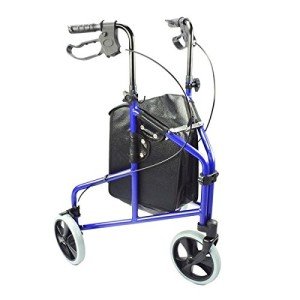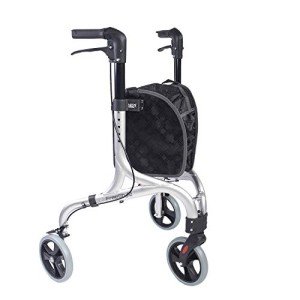
8
May10 Tell-Tale Signs You Need To Find A New How To Use A Rollator

How To Use A Rollator: A Comprehensive Guide
Rollators are mobility aids designed to improve the independence and safety of individuals with mobility challenges. Unlike basic walkers, rollators are geared up with wheels, a seat, and typically a storage pouch, enabling users to move with greater ease and comfort. This article supplies a thorough guide on how to use a rollator effectively and securely, ensuring a smoother and more enjoyable walking experience.

What is a Rollator?
A rollator is a wheeled walking aid. It typically has:
- Three or 4 wheels: Offering stability and maneuverability.
- Hand brakes: For control while walking or when resting.
- A seat: Allowing users to take breaks conveniently.
- Storage area: Such as a basket or pouch for personal products.
Types of Rollators
There are different types of rollators, created to fulfill the needs of various users:
| Type | Description | Best for |
|---|---|---|
| 3-Wheel Rollator | Lighter and more compact, ideal for indoor use | Browsing tight spaces |
| Pepe 4-Wheel Rollator Walker with Seat Rollator | Offers stability and a larger seat, suitable for outdoor use | Longer walks and heavier use |
| Durable Rollator | Developed to support more weight with additional robust functions | Users requiring extra support |
| Pediatric Rollator | Smaller sized in size, changed for kids | Kids with mobility limitations |
How to Use a Rollator
Using a rollator properly is essential to ensure safety Panana 4-Wheel Rollator: Comfortable and Portable Support make the most of the benefits it offers. Here's a detailed guide:
Step 1: Adjust the Height
Before utilizing the rollator, it is important to change the handlebars to the right height.
- Stand directly: With your arms relaxed at your sides.
- Step the height: The hand grips must be at wrist level when the user is standing.
- Protected modifications: Ensure all locking mechanisms are strongly engaged.
Step 2: Familiarize Yourself with the Rollator
Understanding the parts of the rollator will assist boost its use.
- Brakes: Learn how to engage and launch the brakes by squeezing the manages.
- Seat: Identify where to sit conveniently when you require to rest.
- Storage area: Know where you can store personal belongings.
Action 3: Start Walking
- Position the rollator Accessories: Place it an action ahead of you, ensuring that the brakes are launched.
- Grip the handles firmly: Keep a light stress in your arms while keeping the rollator.
- Step inside the frame: Move forward by stepping with one foot and then the other.
- Maintain a straight posture: Walking should be upright, preventing the temptation to lean on the rollator exceedingly.
Step 4: Utilize Brakes
Always use the brakes efficiently to improve safety:
- To decrease: Gradually squeeze the brakes.
- To stop: Fully engage the brakes by pulling on both handles.
- To sit down: Ensure the rollator is stable, then thoroughly lower yourself onto the seat.
Step 5: Maneuver with Care
Turning and navigating can be challenging, so here are necessary ideas:
- Telegraph your direction: Look where you wish to precede turning.
- Take little steps: Move carefully when turning to keep balance.
- Use a three-point turn: Turn from one side to the other, keeping the walker close.
Step 6: Practice Stopping and Resting
Taking breaks is vital. Here are pointers for resting:
- Find flat surfaces: Ensure the area is level when you sit.
- Engage the brakes when seated: This will prevent rolling.
- Shift position slowly: When ready to stand again, eliminate the brakes before rising.
Maintenance and Safety Tips
To ensure the rollator remains practical and safe:
- Regularly check the brakes: Ensure they engage and launch properly.
- Examine wheel alignment: Wheels should not wobble; tighten any loose screws.
- Clean the rollator: Wipe down surface areas and eliminate debris from tires to maintain smooth operation.
Common Concerns
Users may face a number of typical problems when using rollators. Here are some general FAQs:
FAQs
Q1: Can I use a rollator outdoors?A: Yes, the majority of
rollators are developed for both indoor and outdoor use. However, guarantee it has the suitable wheel size and tread for outdoor surfaces. Q2: What are the weight limitations on rollators?A: Weight restricts
normally differ by model, but heavy-duty rollators can usually accommodate users weighing around 300 to 500 pounds. Q3: Are rollators adjustable?A: Yes, a lot of rollators come with adjustable manage heights to accommodate users of numerous heights
. Q4: How do I transport a rollator?A: Many rollators canbe folded for hassle-free transport in a vehicle. Always inspect the user handbook for specific Lightweight Folding Rollator Walker with Comfort Seat guidelines. Q5: Can I use a rollator while recuperating from surgery?A: Yes, numerous people use rollators during recovery to regain strength and balance, but guarantee you follow your doctor's suggestions.
Understanding how to use a rollator properly can substantially enhance mobility and decrease the threat of falls. Whether you are brand-new to using mobility aids or wanting to refine your method, following the guidelines talked about in this post is crucial. With practice, a NRS Healthcare Aluminium 4-Wheeled Rollator with Basket can improve self-reliance while ensuring safety, therefore enabling users to delight in a more active way of life.


Reviews